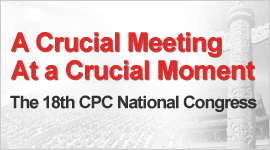Living master of thangka
 0 Comment(s)
0 Comment(s) Print
Print E-mail China Daily, April 3, 2013
E-mail China Daily, April 3, 2013
|
Tanzen Drolma, 18, is in her fourth year of apprenticeship under Migmar Tsering. She said she has a special fondness for portraying eyes because she wants to depict the Buddha's vision "full of supreme mercy". |
Yet "conflicts, wars and natural disasters are unceasingly happening in other countries and regions, which are in my belief caused by the disharmony among countries and regions as well as between human beings and nature," he says.
"Buddha teaches people how to create a harmonious life, increase tolerance with each other and show respect to nature. And I hope this painting can convey that spirit," he adds.
Before it is handed over to the temple, the huge thangka will make its debut in April on the slopes of a gentle hill in the mountains near Chimakha village.
Traditional Tibetan thangka art is an important teaching tool depicting the life of the Buddha, bodhisattvas, influential lamas and other Buddhists.
Together they are seen as an encyclopedia of Tibetan culture and heritage with themes covering many fields including history, politics, medicine and social customs.
No one is sure when the practice began. A common understanding is that the art became distinctive when Buddhism was introduced to Tibet at the peak of the Tubo Kingdom some 1,300 years ago.
A thangka can perform several different functions when created properly. But in general - and perhaps most importantly - the religious art is used as a meditation tool to aid in the search for enlightenment.
Mineral pigments are mainly used in thangka paintings. The most expensive colors are red and are made from coral powder and blue from turquoise.
The composition of a thangka is highly geometric. Arms, legs, eyes, nostrils, ears and various ritual implements are all laid out on a systematic grid of angles and intersecting lines.
The process seems methodical, but it requires artists to have a deep understanding of the symbolism required to capture the spirit of Buddhism, experts say.
"I tore up countless drafts and spent nearly a year and a half finishing the composition and design of the huge thangka," Migmar Tsering says.








Go to Forum >>0 Comment(s)